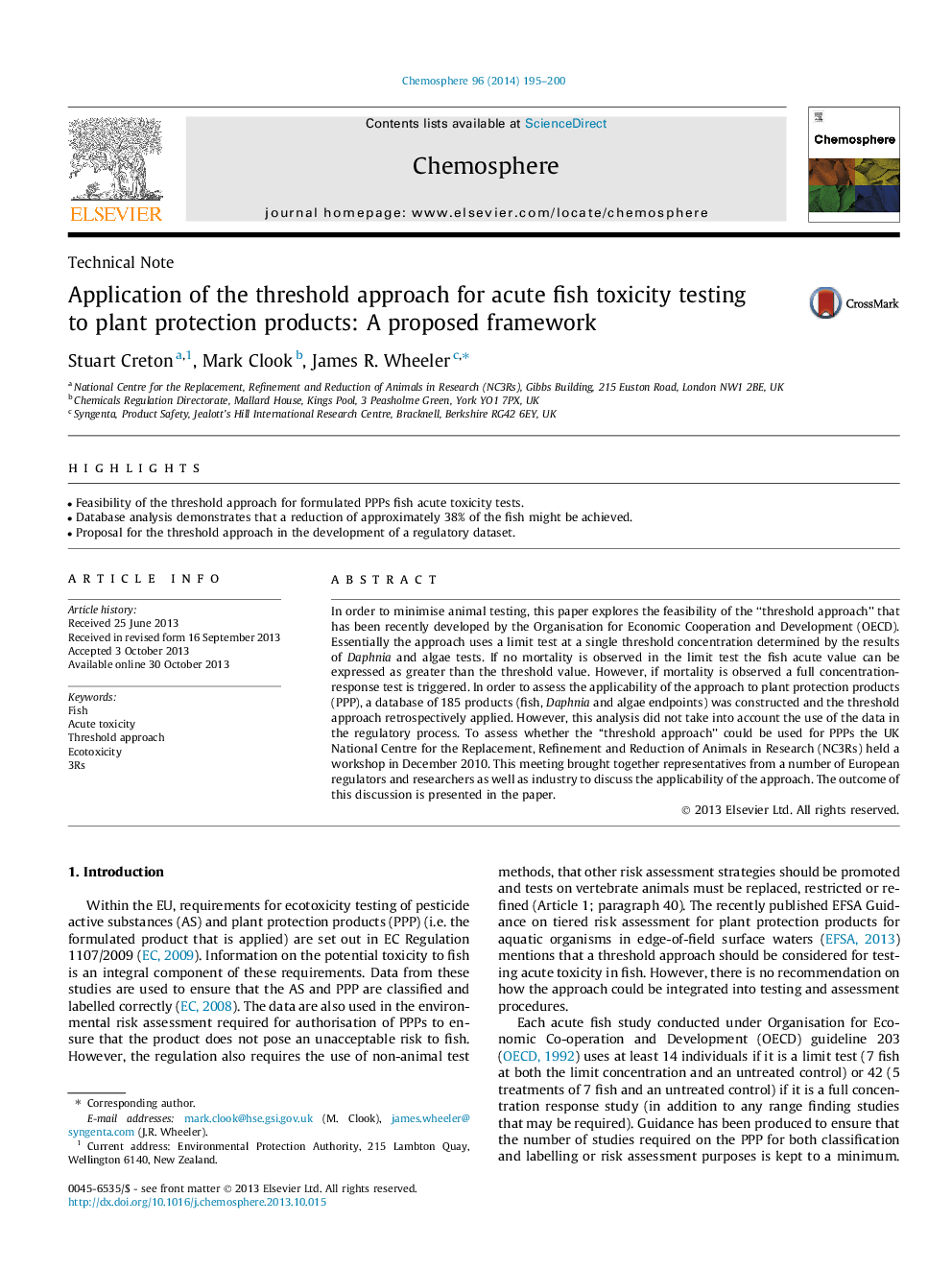| Article ID | Journal | Published Year | Pages | File Type |
|---|---|---|---|---|
| 6309551 | Chemosphere | 2014 | 6 Pages |
Abstract
In order to minimise animal testing, this paper explores the feasibility of the “threshold approach” that has been recently developed by the Organisation for Economic Cooperation and Development (OECD). Essentially the approach uses a limit test at a single threshold concentration determined by the results of Daphnia and algae tests. If no mortality is observed in the limit test the fish acute value can be expressed as greater than the threshold value. However, if mortality is observed a full concentration-response test is triggered. In order to assess the applicability of the approach to plant protection products (PPP), a database of 185 products (fish, Daphnia and algae endpoints) was constructed and the threshold approach retrospectively applied. However, this analysis did not take into account the use of the data in the regulatory process. To assess whether the “threshold approach” could be used for PPPs the UK National Centre for the Replacement, Refinement and Reduction of Animals in Research (NC3Rs) held a workshop in December 2010. This meeting brought together representatives from a number of European regulators and researchers as well as industry to discuss the applicability of the approach. The outcome of this discussion is presented in the paper.
Related Topics
Life Sciences
Environmental Science
Environmental Chemistry
Authors
Stuart Creton, Mark Clook, James R. Wheeler,
